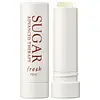What's inside
What's inside
 Key Ingredients
Key Ingredients

 Benefits
Benefits

 Concerns
Concerns

 Ingredients Side-by-side
Ingredients Side-by-side

Cera Alba
EmollientSimmondsia Chinensis Seed Oil
EmollientHydrogenated Olive Oil Decyl Esters
Emulsion StabilisingHydrogenated Palm Kernel Glycerides
EmollientRicinus Communis Seed Oil
MaskingVitis Vinifera Seed Oil
EmollientEthylhexyl Palmitate
EmollientParfum
MaskingHydrogenated Palm Glycerides
EmollientTheobroma Grandiflorum Seed Butter
Skin ConditioningPrunus Domestica Seed Oil
Skin ConditioningCopernicia Cerifera Wax
Limnanthes Alba Seed Oil
Skin ConditioningHydrogenated Vegetable Oil
EmollientPassiflora Incarnata Seed Oil
Skin ProtectingSucrose Tetrastearate Triacetate
EmollientCrithmum Maritimum Extract
Skin ConditioningCommiphora Mukul Resin Extract
Skin ConditioningRibes Nigrum Seed Oil
EmollientTocopherol
AntioxidantAscorbyl Tetraisopalmitate
AntioxidantTocopheryl Acetate
AntioxidantAscorbyl Palmitate
AntioxidantPEG-6 Isostearate
EmulsifyingCaprylic/Capric Triglyceride
MaskingAmmonium Glycyrrhizate
MaskingTrihydroxystearin
Skin ConditioningHesperetin Laurate
AntioxidantVanillin
MaskingButylene Glycol
HumectantBHT
AntioxidantCaprylyl Glycol
EmollientSodium Hyaluronate
HumectantHexylene Glycol
EmulsifyingPhenoxyethanol
PreservativeLimonene
PerfumingCitral
PerfumingBenzyl Alcohol
PerfumingLinalool
PerfumingGeraniol
PerfumingCera Alba, Simmondsia Chinensis Seed Oil, Hydrogenated Olive Oil Decyl Esters, Hydrogenated Palm Kernel Glycerides, Ricinus Communis Seed Oil, Vitis Vinifera Seed Oil, Ethylhexyl Palmitate, Parfum, Hydrogenated Palm Glycerides, Theobroma Grandiflorum Seed Butter, Prunus Domestica Seed Oil, Copernicia Cerifera Wax, Limnanthes Alba Seed Oil, Hydrogenated Vegetable Oil, Passiflora Incarnata Seed Oil, Sucrose Tetrastearate Triacetate, Crithmum Maritimum Extract, Commiphora Mukul Resin Extract, Ribes Nigrum Seed Oil, Tocopherol, Ascorbyl Tetraisopalmitate, Tocopheryl Acetate, Ascorbyl Palmitate, PEG-6 Isostearate, Caprylic/Capric Triglyceride, Ammonium Glycyrrhizate, Trihydroxystearin, Hesperetin Laurate, Vanillin, Butylene Glycol, BHT, Caprylyl Glycol, Sodium Hyaluronate, Hexylene Glycol, Phenoxyethanol, Limonene, Citral, Benzyl Alcohol, Linalool, Geraniol
Butyl Methoxydibenzoylmethane 3%
UV AbsorberEthylhexyl Methoxycinnamate 7.5%
UV AbsorberPetrolatum 42.3%
EmollientAloe Barbadensis Leaf Extract
EmollientCopernicia Cerifera Wax
Cetyl Alcohol
EmollientParfum
MaskingIsocetyl Stearate
EmollientIsopropyl Lanolate
EmollientLanolin
EmollientParaffinum Liquidum
EmollientParaffin
PerfumingSaccharin
MaskingTocopheryl Linoleate/Oleate
AntioxidantTocopheryl Acetate
AntioxidantPalau White Clay
HumectantButyl Methoxydibenzoylmethane 3%, Ethylhexyl Methoxycinnamate 7.5%, Petrolatum 42.3%, Aloe Barbadensis Leaf Extract, Copernicia Cerifera Wax, Cetyl Alcohol, Parfum, Isocetyl Stearate, Isopropyl Lanolate, Lanolin, Paraffinum Liquidum, Paraffin, Saccharin, Tocopheryl Linoleate/Oleate, Tocopheryl Acetate, Palau White Clay
Alternatives
Ingredients Explained
These ingredients are found in both products.
Ingredients higher up in an ingredient list are typically present in a larger amount.
Copernicia Cerifera Wax comes from a palm tree native to Brazil; another name for this ingredient is Carnauba Wax.
This ingredient is used to thicken texture and also leaves behind a film when applied.
Fun fact: This wax has the highest melting point of all natural waxes and low solubility.
Learn more about Copernicia Cerifera WaxParfum is a catch-all term for an ingredient or more that is used to give a scent to products.
Also called "fragrance", this ingredient can be a blend of hundreds of chemicals or plant oils. This means every product with "fragrance" or "parfum" in the ingredients list is a different mixture.
For instance, Habanolide is a proprietary trade name for a specific aroma chemical. When used as a fragrance ingredient in cosmetics, most aroma chemicals fall under the broad labeling category of “FRAGRANCE” or “PARFUM” according to EU and US regulations.
The term 'parfum' or 'fragrance' is not regulated in many countries. In many cases, it is up to the brand to define this term.
For instance, many brands choose to label themselves as "fragrance-free" because they are not using synthetic fragrances. However, their products may still contain ingredients such as essential oils that are considered a fragrance by INCI standards.
One example is Calendula flower extract. Calendula is an essential oil that still imparts a scent or 'fragrance'.
Depending on the blend, the ingredients in the mixture can cause allergies and sensitivities on the skin. Some ingredients that are known EU allergens include linalool and citronellol.
Parfum can also be used to mask or cover an unpleasant scent.
The bottom line is: not all fragrances/parfum/ingredients are created equally. If you are worried about fragrances, we recommend taking a closer look at an ingredient. And of course, we always recommend speaking with a professional.
Learn more about ParfumTocopheryl Acetate is AKA Vitamin E. It is an antioxidant and protects your skin from free radicals. Free radicals damage the skin by breaking down collagen.
One study found using Tocopheryl Acetate with Vitamin C decreased the number of sunburned cells.
Tocopheryl Acetate is commonly found in both skincare and dietary supplements.
Learn more about Tocopheryl Acetate